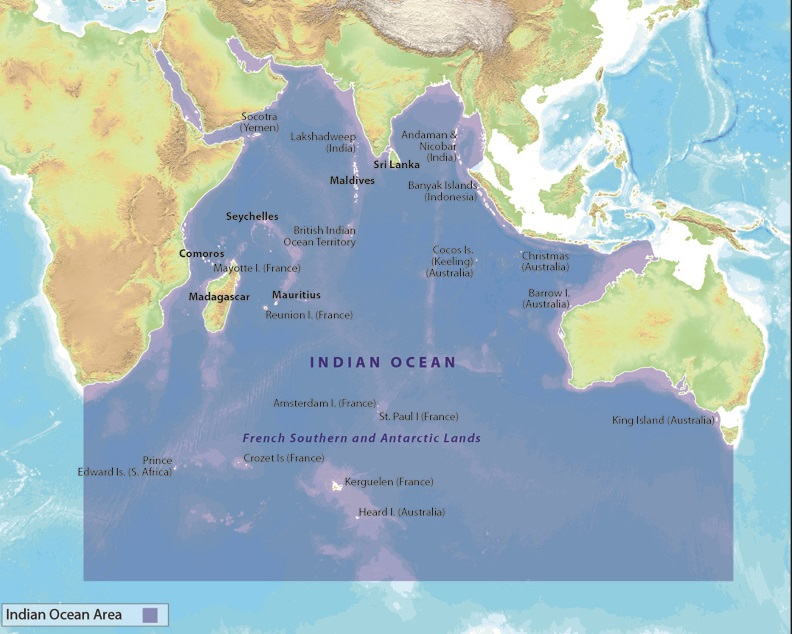The Indian Ocean is located mostly in the Southern Hemisphere, between Africa, southern Asia, Australia, and Antarctica. It’s the third-largest ocean, and holds about 20 percent of the world’s ocean waters. The Indian ocean is named after India because: India holds a central location which is at the head of the Indian Ocean. India in ancient times was an important location in the Indian Ocean which connected Europe with countries of Southeast Asia.
Two of Asia’s biggest rivers, the Indus and the Ganges, run into the Indian Ocean. Rivers carry sediment. So the Indian Ocean has the largest amount of river sediment in the world—underneath the waves are two enormous fans of sediment more than 1,240 miles (2,000 kilometers) wide. One of the most unusual aspects of the Indian Ocean is that its currents change direction with the seasons. In the winter, monsoon winds push currents toward Africa. Summer winds push currents toward Asia. All other oceans have currents that stay the same.
The sea lanes in the Indian Ocean are considered among the most strategically important in the world—according to the Journal of the Indian Ocean Region, more than 80 percent of the world’s seaborne trade in oil transits through Indian Ocean choke points, with 40 percent passing through the Strait of Hormuz, 35 percent of world oil exports. One of the reasons why the Chinese would like to dominate the Indian Ocean is the Malacca Strait. However, this also keeps their economic prosperity at gunpoint as at any time the US and Indian navies can block it. To minimise this fear, the Chinese are working to create a naval base at Gwadar, Pakistan.
Madagascar is the largest island in the Indian Ocean with an area of about 226,658 square miles.

